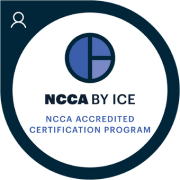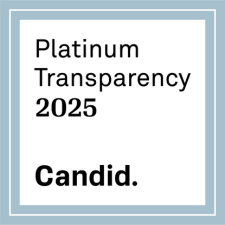MedTox 2023 LLSA Reading List
Breast Milk Transfer
Moss MJ, Bushlin I, Kazmierczak S, Koop D, Hendrickson RG, Zuckerman KE, et al. Cannabis use and measurement of cannabinoids in plasma and breast milk of breastfeeding mothers. Pediatr Res 2021 Jan 19. Epub ahead of print. PMID: 33469174.
- The milk/plasma ratio of THC in the study by Moss et al., was ___________________.
- Mothers in this study demonstrated an ___________________ in cannabis concentrations between the 2-week and the 2-month study visit.
Chemotherapeutic Drugs
Lipe DN, Shafer S. CAR-T and checkpoint inhibitors: toxicities and antidotes in the emergency department. Clin Toxicol (Phila) 2021 May;59(5):376-85. Epub 2021 Feb 12. PMID: 33576256.
- The 2 most common toxicity syndromes associated with CAR-T therapy are ___________________ and ___________________.
- Grade 2 or greater Immune-related Adverse Events (IrAEs) from checkpoint inhibitors should be treated with supportive care and ___________________.
Cleansers and Caustics
Hoffman RS, Burns MM, Gosselin S. Ingestion of caustic substances. N Engl J Med 2020 Apr 30;382(18):1739-48. PMID: 32348645.
- A 3-day course of methylprednisolone is indicated for grade ___________________ esophageal injuries.
- Patients with unintentional alkali ingestions should receive endoscopy if they have ___________________, ___________________, or if ___________________ after observation.
Drugs That Affect the Nervous System and Altered Mental Status
Murphy L, Wolfer H, Hendrickson RG. Toxicologic confounders of brain death determination: a narrative review. Neurocrit Care 2020 Sep 30:1-18. Epub ahead of print PMID: 33000377.
- The most common pharmaceutical implicated in a syndrome mimicking brain death was ___________________.
- In geographic areas where neurotoxic snake envenomation may confound brain death diagnosis, the authors recommend ___________________ testing to exclude this diagnosis.
Extracorporeal Removal
Cole JB, Olives TD, Ulici A, Litell JM, Bangh SA, Arens AM, et al. Extracorporeal membrane oxygenation for poisonings reported to U.S. Poison Centers from 2000 to 2018: an analysis of the national poison data system. Crit Care Med 2020 Aug;48(8):1111-19. PMID: 32697480.
- ECMO was commonly associated with poisons that cause either ___________________ or ___________________ from aspiration or chemical injuries.
- Large regions of the United States, primarily ___________________ areas, reported no use of ECMO.
Extracorporeal Removal and Antidiabetic Drugs
Calello DP, Liu KD, Wiegand TJ, Roberts DM, Lavergne V, Gosselin S, et al. Extracorporeal Treatments in Poisoning Workgroup. Extracorporeal treatment for metformin poisoning: systematic review and recommendations from the Extracorporeal Treatments in Poisoning Workgroup. Crit Care Med 2015 Aug; 43(8):1716-30. PMID: 25860205.
- Extracorporeal treatment, such as intermittent hemodialysis, is recommended if ___________________, ___________________, and if standard therapy fails.
- Hemodialysis may need to be continued for an extended duration and should only be stopped when the ___________________ and the ___________________.
Hearing Loss and Opioids
Mozeika AM, Ruck BE, Nelson LS, Calello DP. Opioid-associated hearing loss: a 20-year review from the New Jersey Poison Center. J Med Toxicol 2020 Oct;16(4):416-22. Epub 2020 May 28. PMID: 32468345.
- The hearing loss described in this study was ___________________ in 98% of patients.
- Hypoxic events were reported prior to the onset of hearing loss in only ___________________% of patients.
Herbicides
Eddleston M. Paraquat and Diquat. In: Brent J, Dragan P, Hatten B, Megarband B, Palmer R, et al., editors. Critical Care Toxicology. Champaign, IL: Springer, 2017: 1855-74. doi: https://doi.org/10.1007/978-3-319-17900-1_100
- Paraquat ingestion leads to ___________________ toxicity whereas diquat leads to ___________________ toxicity.
- Paraquat is actively transported into pneumocytes by the ___________________ transporter that also transports ___________________.
Naloxone and Opioids
Carpenter J, Murray BP, Atti S, Moran TP, Yancey A, Morgan B. Naloxone dosing after opioid overdose in the era of illicitly manufactured fentanyl. J Med Toxicol 2020 Jan;16(1):41-8. PMID: 31471760.
- Naloxone was effective in reversing opioid toxicity in ___________________% of opioid overdoses in the emergency department.
- Doses of naloxone administered to patients with fentanyl in their urine were ___________________ doses administered to patients with opiates detected in their urine.
Nicotine and Tobacco
Hughes A, Hendrickson RG. An epidemiologic and clinical description of e-cigarette toxicity. Clin Toxicol (Phila) 2019 Apr;57(4):287-293. PMID: 30306801
- After ingestion of e-cigarette nicotine-containing liquid, symptoms in both adults and children occurred almost ___________________.
- Systemic toxicity may occur with ___________________ exposures and ___________________ exposures in toddlers.
Weiner SG, Baker O, Bernson D, Schuur JD. One-year mortality of patients after emergency department treatment for nonfatal opioid overdose. Ann Emerg Med 2020 Jan;75(1):13-17. Epub 2019 Jun 20. PMID: 31229387.
- Patients are at highest risk for death after a hospital visit for opioid overdose in the first ___________________ days.
- Of patients treated for opioid overdose, the mortality rate within one year was ___________________%.
Physostigmine and Anticholinergics
Wang GS, Baker K, Ng P, Janis GC, Leonard J, Mistry RD, et al. A randomized trial comparing physostigmine vs lorazepam for treatment of antimuscarinic (anticholinergic) toxidrome. Clin Toxicol (Phila) 2021 Aug;59(8):698-704. Epub 2020 Dec 9. PMID: 33295809.
- Patients receiving physostigmine had a ___________________ rate of delirium compared to those receiving lorazepam.
- The incidence of cardiac dysrhythmias after physostigmine was ___________________%.
Click to see all answers
Breast Milk Transfer
- The milk/plasma ratio of THC in the study by Moss et al., was 7.0.
- Mothers in this study demonstrated an increase in cannabis concentrations between the 2-week and the 2-month study visit.
Chemotherapeutic Drugs
- The 2 most common toxicity syndromes associated with CAR-T therapy are cytokine release syndrome (CRS) and immmune effector cell-associated neurotoxicity (ICANS).
- Grade 2 or greater Immune-related Adverse Events (IrAEs) from checkpoint inhibitors should be treated with supportive care and corticosteroids.
Cleansers and Caustics
- A 3-day course of methylprednisolone is indicated for grade 2B esophageal injuries.
- Patients with unintentional alkali ingestions should receive endoscopy if they have vomiting and drooling, stridor, or if unable to drink after observation.
Drugs That Affect the Nervous System and Altered Mental Status
- The most common pharmaceutical implicated in a syndrome mimicking brain death was baclofen.
- In geographic areas where neurotoxic snake envenomation may confound brain death diagnosis, the authors recommend train of four testing to exclude this diagnosis.
Extracorporeal Removal
- ECMO was commonly associated with poisons that cause either cardiogenic shock or acute respiratory failure from aspiration or chemical injuries.
- Large regions of the United States, primarily rural areas, reported no use of ECMO.
Extracorporeal Removal and Antidiabetic Drugs
- Extracorporeal treatment, such as intermittent hemodialysis, is recommended if lactate > 20 mmol/L, blood pH <= 7.0, and if standard therapy fails.
- Hemodialysis may need to be continued for an extended duration and should only be stopped when the lactate < 3 mmol/L and the pH > 7.35.
Hearing Loss and Opioids
- The hearing loss described in this study was bilateral in 98% of patients.
- Hypoxic events were reported prior to the onset of hearing loss in only 29% of patients.
Herbicides
- Paraquat ingestion leads to pulmonary toxicity whereas diquat leads to renal toxicity.
- Paraquat is actively transported into pneumocytes by the polyamine transporter that also transports putrescine.
Naloxone and Opioids
- Naloxone was effective in reversing opioid toxicity in 93% of opioid overdoses in the emergency department.
- Doses of naloxone administered to patients with fentanyl in their urine were the same as doses administered to patients with opiates detected in their urine.
Nicotine and Tobacco
- After ingestion of e-cigarette nicotine-containing liquid, symptoms in both adults and children occurred almost immediately.
- Systemic toxicity may occur with dermal exposures and “tasting” exposures in toddlers.
Opioids
- Patients are at highest risk for death after a hospital visit for opioid overdose in the first 2 days.
- Of patients treated for opioid overdose, the mortality rate within one year was 5%.
Physostigmine and Anticholinergics
- Patients receiving physostigmine had a decreased rate of delirium compared to those receiving lorazepam.
- The incidence of cardiac dysrhythmias after physostigmine was 0%.



